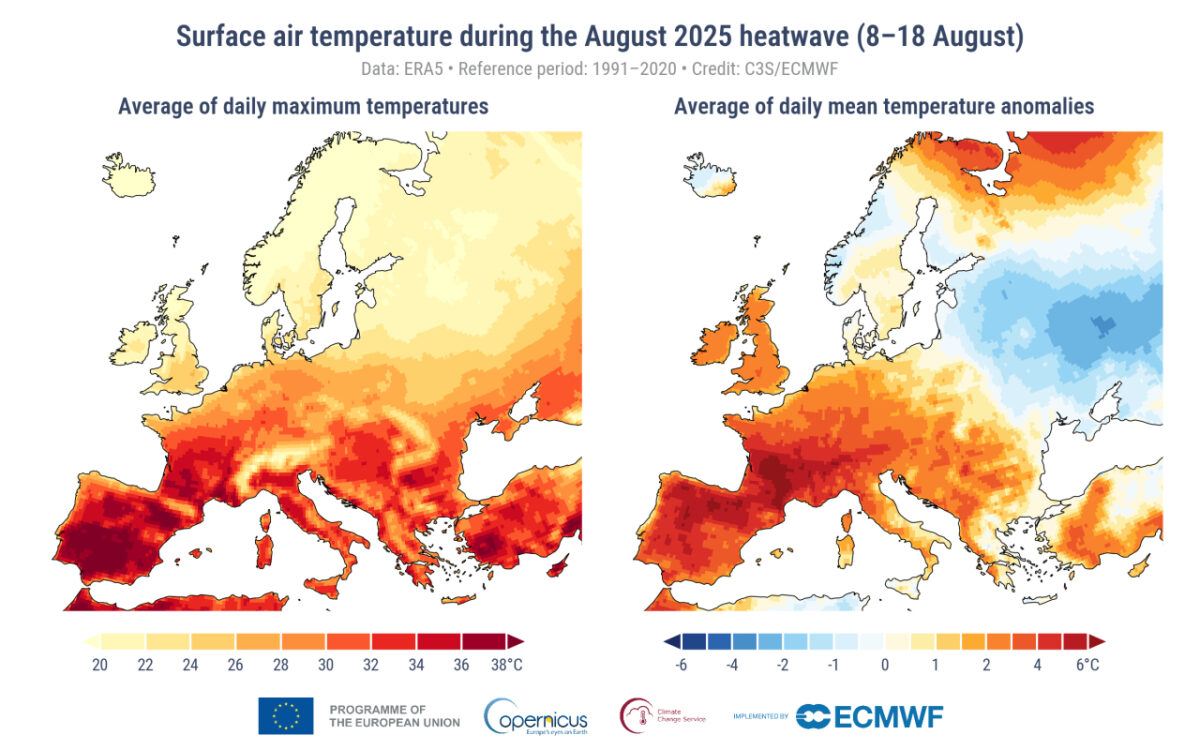
Northwest Europe Escapes Extreme Heat in August

August was the third-warmest August on record globally, according to the Copernicus Climate Change Service (C3S), but much of northern Europe, including Ireland, Britain, Scandinavia and the Baltic States, experienced cooler-than-average temperatures.
Across the wider European continent, western and southern regions faced above-average heat, particularly in Spain, southwest France and parts of Italy.
The report, marking the ten-year anniversary of the monthly C3S climate bulletin, shows that Europe as a whole recorded its fourth-warmest summer on record, with average temperatures 0.9°C above the 1991–2020 norm. While heatwaves and wildfires affected the Iberian Peninsula and southwest France, northern Europe saw below-average temperatures and wetter-than-normal conditions in parts of Scandinavia, the Baltic States and the UK.

Sea surface temperatures in the North Atlantic were notably high, with record warmth reported west of France and the United Kingdom, highlighting persistent ocean heating in the region. Arctic sea ice in the European Arctic sector remained below average, though not reaching record lows seen in 2012.
Hydrological patterns were highly variable across Northwest Europe. Ireland, the UK and much of Scandinavia received above-average rainfall, while southern Europe and parts of western Europe experienced drier conditions. Northern Italy, eastern Spain, and the Adriatic coasts also saw wetter-than-average conditions.
Globally, August 2025 continued a trend of high temperatures, with much of Asia, Siberia, Japan and the Middle East seeing above-average warmth, while Australia, South America and parts of North America were cooler than normal. The 12-month period from September 2024 to August 2025 was 0.64°C above the 1991–2020 average and 1.52°C above pre-industrial levels.
Samantha Burgess, Strategic Lead for Climate at ECMWF, said the findings underscore the growing urgency of addressing emissions and adapting to climate extremes. “With the world’s oceans remaining unusually warm and heatwaves hitting parts of Europe, the need for both mitigation and adaptation has never been clearer,” she said.
The C3S bulletin combines billions of observations from satellites, ships, aircraft and weather stations to provide a detailed picture of global and regional climate patterns. For Northwest Europe, the report confirms a summer of contrasts, with cooler northern regions offsetting intense heat further south.
Share this WeathÉire story:







